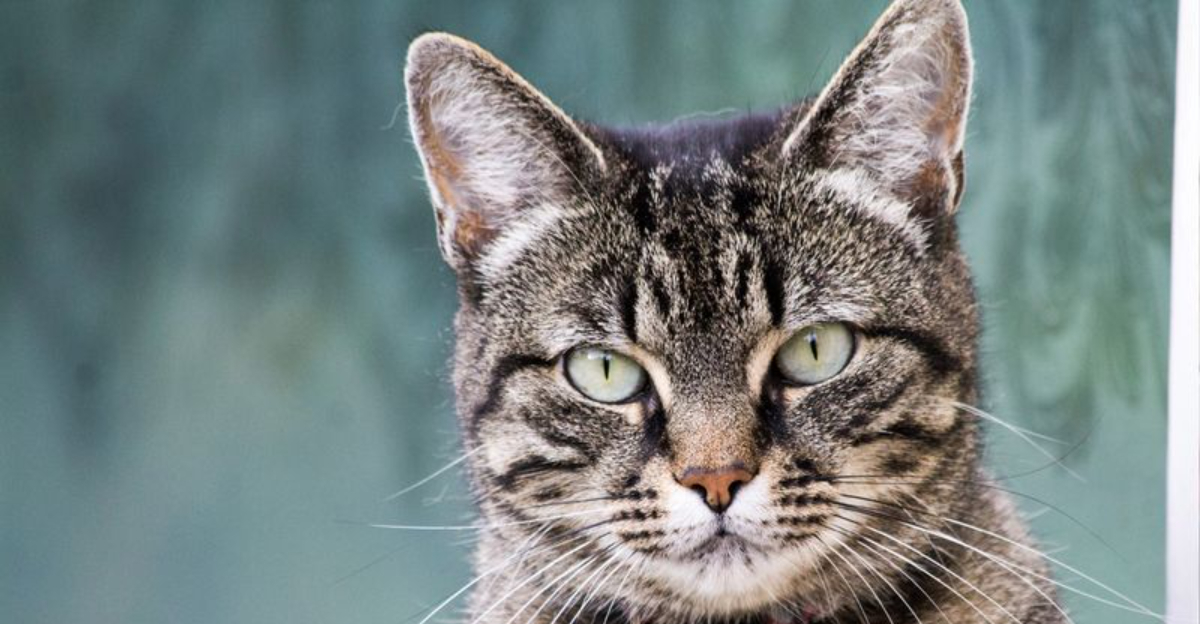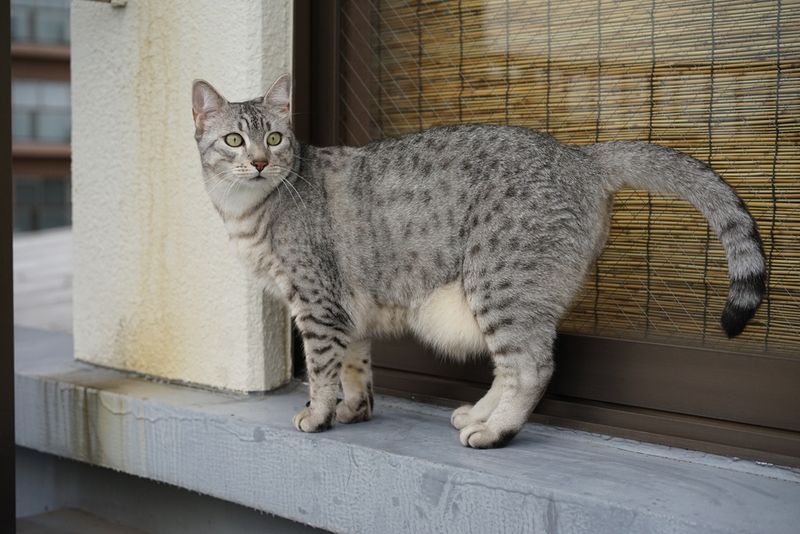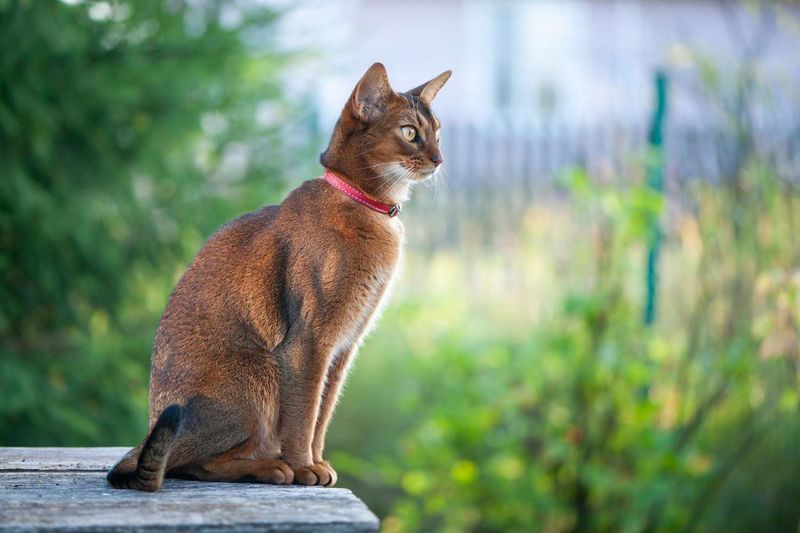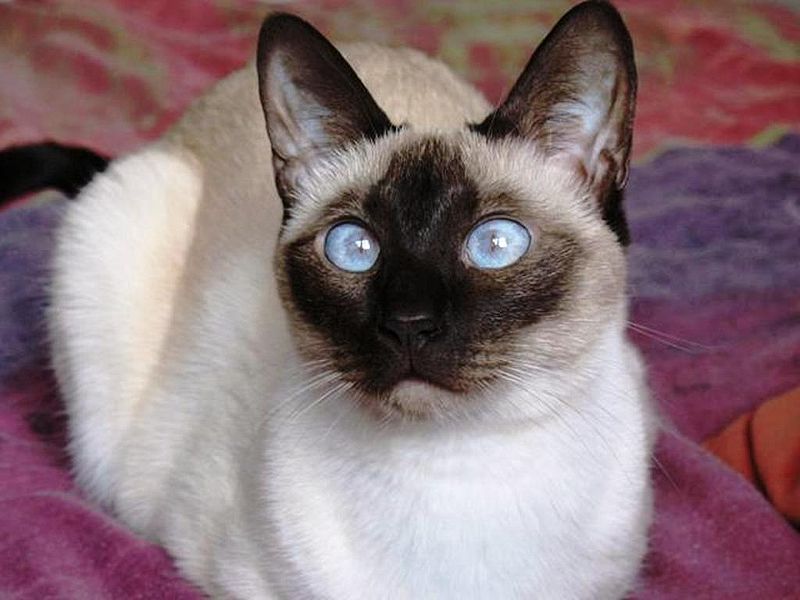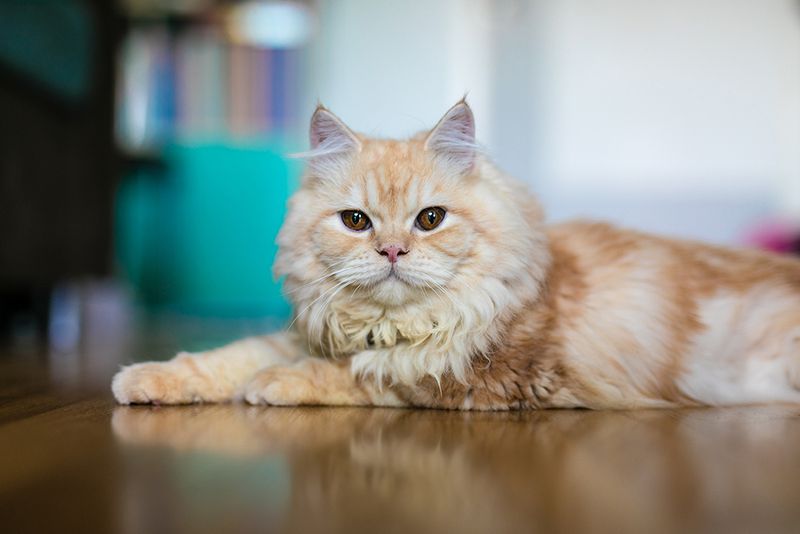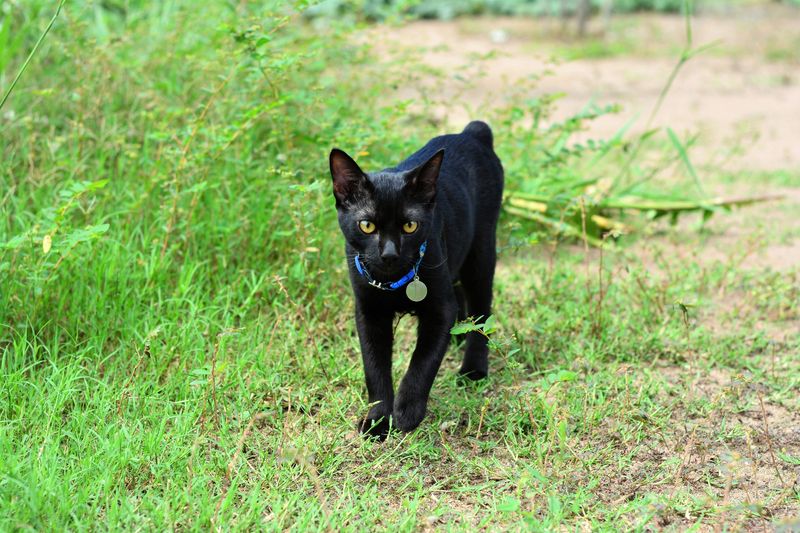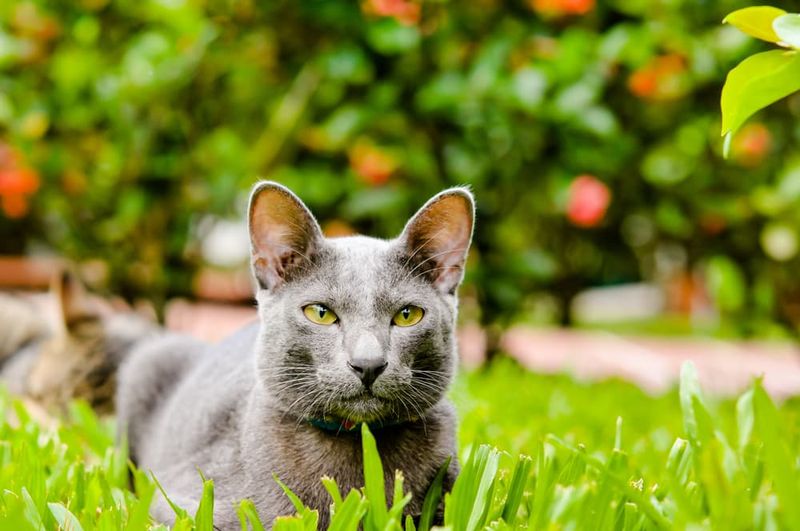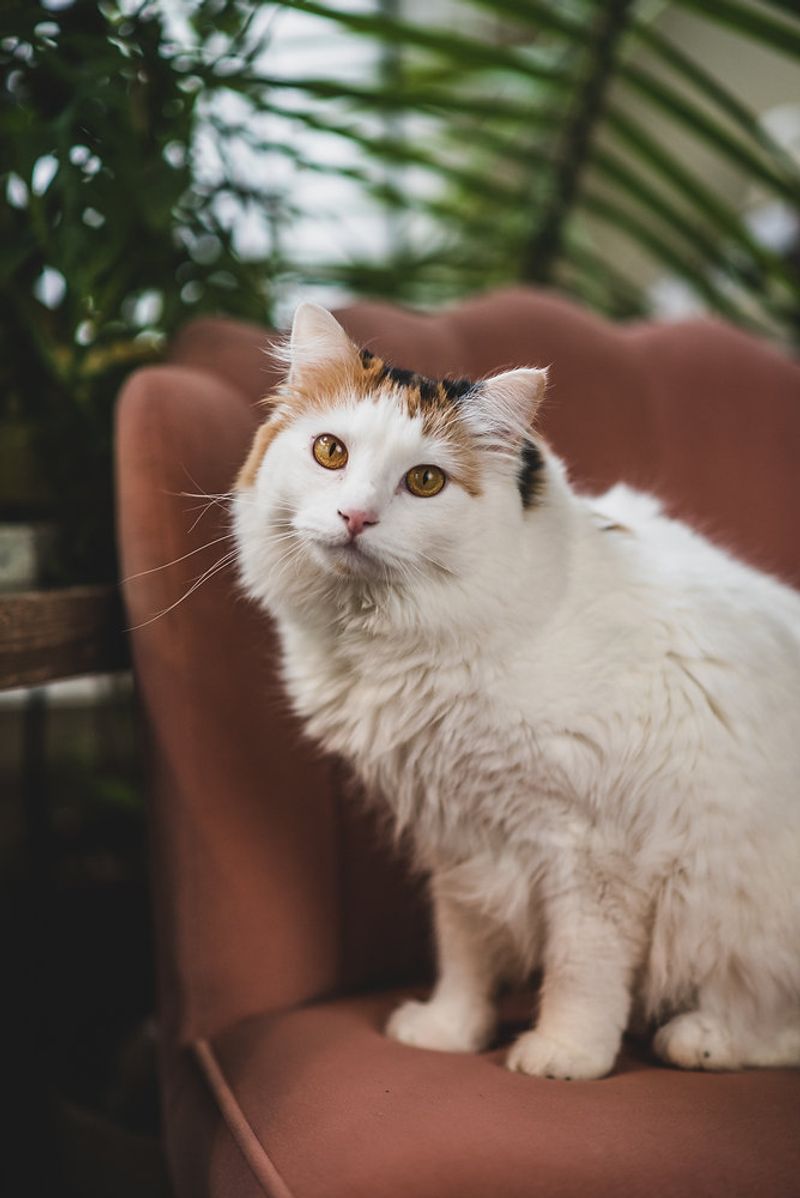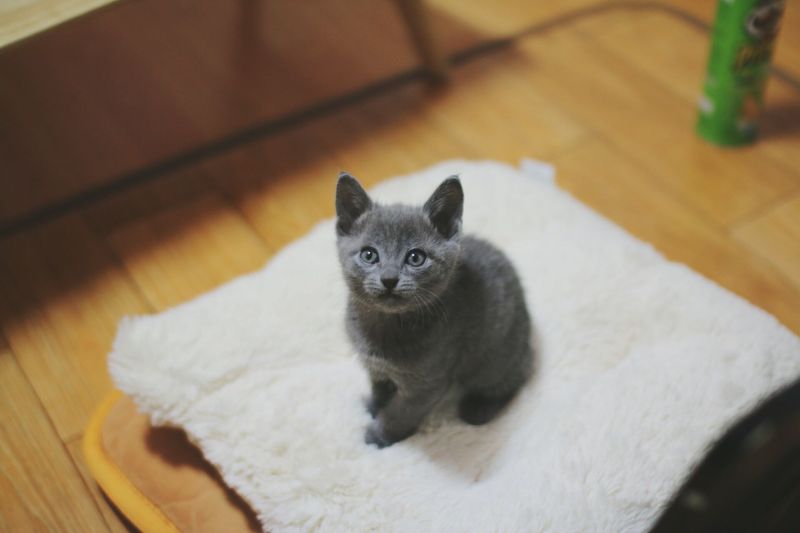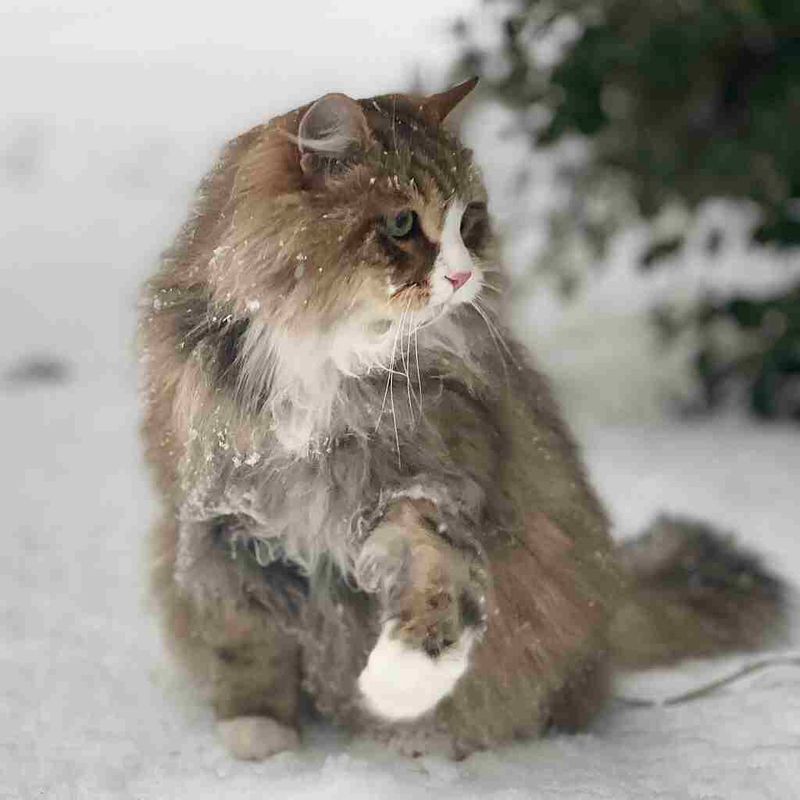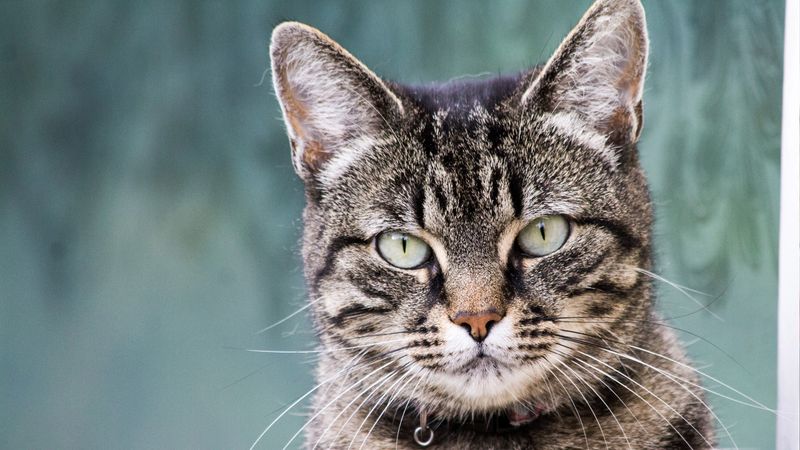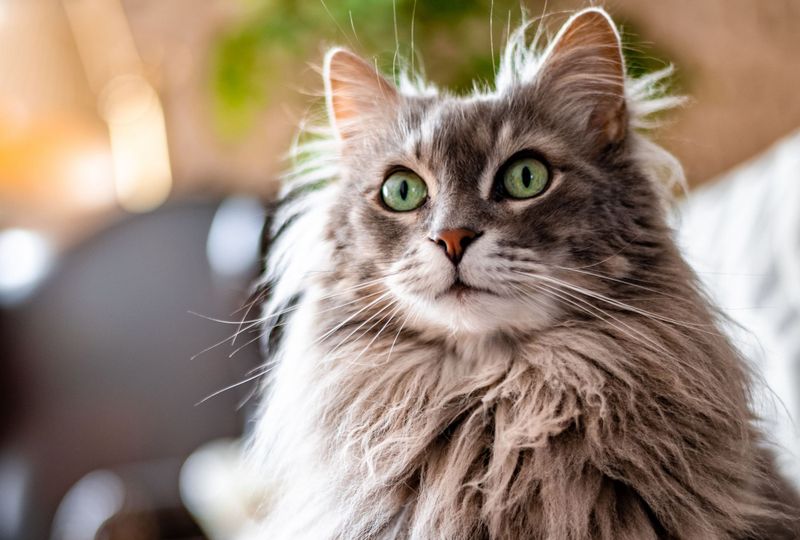📖 Table of Content:
Cats have been our companions for thousands of years, with some breeds dating back to ancient civilizations. These time-tested felines have survived through countless generations while maintaining their distinctive traits and characteristics. From temple guardians to royal companions, these ancient cat breeds continue to capture our hearts with their unique personalities, historical significance, and enduring charm.
1. Egyptian Mau
Natural athletes with spotted coats, Egyptian Maus are considered one of the oldest domesticated cat breeds in the world. Their history traces back to ancient Egypt around 1550 BCE, where they were revered as sacred animals and depicted in ancient artwork.
These medium-sized cats can run up to 30 miles per hour, making them the fastest domestic cats. Their distinctive spots occur naturally rather than through human breeding programs.
Egyptian Maus form strong bonds with their families while maintaining an independent streak. Their expressive gooseberry-green eyes and characteristic ‘worried’ facial expression add to their unique appeal that has endured for millennia.
2. Abyssinian
Believed to originate from ancient Egypt, Abyssinians resemble the cats depicted in Egyptian tomb paintings. DNA evidence suggests they may have come from coastal regions along the Indian Ocean and parts of Southeast Asia.
Their ticked coat pattern, where each hair has bands of color, creates a shimmering effect that catches the light beautifully. Abyssinians are extremely active, intelligent cats who love to explore their surroundings.
Unlike many breeds, they rarely enjoy sitting in laps but prefer to be near their humans while staying busy. Their playful nature and striking appearance have kept them popular for centuries, making them one of the oldest recognizable cat breeds still thriving today.
3. Siamese
Royal companions in ancient Siam (now Thailand), these cats were so valued that stealing one was punishable by death. Manuscripts dating back to the 14th century depict cats with the distinctive pointed pattern Siamese are famous for.
The breed’s striking blue eyes result from a temperature-sensitive albinism gene that affects pigment production. Warmer parts of the body stay lighter while cooler extremities develop darker coloration.
Famous for their vocal nature, Siamese cats communicate with a wide range of sounds and will hold lengthy “conversations” with their owners. Their social, intelligent personality, combined with their elegant appearance, has maintained their popularity through centuries of breeding.
4. Persian
Long-haired beauties with origins dating back to 1600 BCE in Mesopotamia (modern-day Iran), Persians were brought to Europe in the 17th century. Their luxurious coats immediately captivated aristocrats and royalty across the continent.
These cats have changed significantly over centuries of breeding. Early Persians had longer noses and less extreme features compared to today’s flat-faced varieties.
Despite their high-maintenance coats requiring daily grooming, Persians remain one of the most popular cat breeds worldwide. Their calm, gentle temperament makes them ideal indoor companions. The Persian’s ability to adapt to changing human preferences while maintaining their sweet disposition explains their enduring appeal across millennia.
5. Turkish Angora
Originating in central Turkey, Turkish Angoras take their name from Ankara (formerly Angora). Historical records from the 16th century mention these elegant white cats, though they likely existed much earlier.
Once nearly extinct, the breed was preserved through careful breeding programs at the Ankara Zoo. Their silky, medium-length coat requires less maintenance than other longhaired breeds, and they shed seasonally rather than continuously.
Many Turkish Angoras have odd-colored eyes (one blue, one amber), a trait particularly valued in Turkey. These cats combine playfulness with grace and form deep bonds with their families while maintaining a mischievous streak that has charmed humans for centuries.
6. Japanese Bobtail
Recognized by their distinctive bobbed tails, Japanese Bobtails appear in Japanese artwork dating back to the 6th century. Legend claims they protected precious silk from rats in Buddhist temples, earning imperial protection.
The breed’s natural short tail results from a genetic mutation that causes no health problems. Each tail is unique – like a fingerprint – with different curves, kinks, and fur patterns.
These cats bring good luck according to Japanese tradition, inspiring the famous Maneki Neko (beckoning cat) figurines seen in businesses worldwide. Active and intelligent, Japanese Bobtails enjoy playing fetch and learning tricks, maintaining their working cat heritage while adapting to modern companion life.
7. Korat
Considered good luck charms in their native Thailand, Korats have been cherished for at least 700 years. Their name comes from the Korat province where they originated, though Thais call them Si-Sawat (good fortune).
Their distinctive blue-gray coats have silver tips that create a shimmering effect when they move. Traditionally given as pairs to newlyweds, these cats symbolize prosperity and fertility in Thai culture.
Korats form exceptional bonds with their families and are highly sensitive to mood and atmosphere. Their heart-shaped faces and large green eyes remain virtually unchanged from ancient depictions, making them living artifacts of feline history that continue to bring joy and supposed good fortune to modern homes.
8. Turkish Van
Swimming cats from the Lake Van region of Turkey, these ancient felines have a documented history dating back at least 5,000 years. Their unique water-resistant coat allows them to swim comfortably, earning them the nickname “swimming cats.”
The breed’s distinctive van pattern (white body with colored head and tail) is so characteristic that the term “van” now describes this coloration in other breeds. According to legend, these cats swam ashore from Noah’s Ark when it landed on Mount Ararat.
Turkish Vans develop slowly, not reaching full maturity until 3-5 years of age. Their playful, energetic nature combines with remarkable intelligence, making them engaging companions that have fascinated humans across centuries with their unusual swimming ability.
9. Chartreux
Blue-gray cats with origins in ancient Persia, Chartreux were likely brought to France by Crusaders in the 13th century. Monastery records mention these cats being kept by Carthusian monks, though whether they named the cats or the cats named the famous Chartreuse liqueur remains debated.
Their water-resistant double coats feel like sheep’s wool and historically provided protection in harsh mountain climates. Nearly extinct after World War II, dedicated breeders saved the Chartreux from disappearing forever.
Known for their hunting prowess and “smiling” expression, these cats combine strength with agility. Their silent nature (many rarely meow) made them perfect companions for monks under vows of silence, a trait that continues to endear them to appreciative owners today.
10. Russian Blue
Regal cats from Russia’s Archangel Isles, Russian Blues reportedly traveled with sailors to England and Northern Europe in the 1860s. Their dense double coats evolved to withstand harsh northern winters.
The breed nearly disappeared during World War II but was revived by crossing surviving cats with Siamese and British Shorthairs. Today’s Russian Blues have returned to their original appearance through careful breeding.
Their plush coat contains more hair per square inch than most breeds, giving them their distinctive dense appearance. Reserved with strangers but deeply devoted to their families, Russian Blues have maintained their aristocratic bearing and gentle temperament that first made them favorites of Russian nobility centuries ago.
11. Norwegian Forest Cat
Mighty mousers from Norse mythology, Norwegian Forest Cats may have traveled with Vikings as ship cats over 1,000 years ago. These massive felines evolved naturally in the Scandinavian forests, developing their weather-resistant coats and sturdy builds without human intervention.
Their semi-long water-repellent fur has a woolly undercoat for insulation against harsh Nordic winters. Powerful hind legs make them exceptional climbers who can scale rock faces by running straight up – a skill few domestic cats possess.
Featured in Norse mythology as the skogkatt, these cats were believed to be so large that even the god Thor couldn’t lift them. After nearly disappearing in the mid-20th century, they were declared Norway’s national cat in the 1970s, preserving their ancient lineage.
12. Maine Coon
Gentle giants with American origins, Maine Coons have a history shrouded in folklore dating back to the 1800s. One persistent legend claims they resulted from matings between domestic cats and raccoons – biologically impossible, but explains their bushy tails.
More likely, they developed from longhaired cats brought by European sailors to New England, evolving to survive harsh winters. Their tufted ears, snowshoe-like paws, and water-resistant coats are adaptations to cold climates.
Maine Coons grow slowly, not reaching full size until 3-5 years old. Despite their imposing size (up to 25 pounds), they’re known as “gentle giants” with chirping vocalizations instead of meows. Their working cat heritage makes them practical companions who’ve maintained their useful skills across generations.
13. European Shorthair
Though common today, European Shorthairs have an extraordinary past—they trace their lineage back to the cats ancient Romans relied on for rodent control. As Roman legions marched across Europe, these skilled hunters traveled with them, adapting to many environments.
Unlike many breeds created through selective breeding, European Shorthairs developed naturally over centuries. They represent the original domestic cats of Europe, with a genetic lineage stretching back thousands of years.
Each country’s variation eventually developed into distinct breeds – British Shorthairs in England, Chartreux in France, and more. Sturdy and healthy with few genetic issues, European Shorthairs combine the best qualities of natural selection with consistent temperament. Their practical nature and adaptability have made them beloved companions across countless generations.
14. Manx
Tailless wonders from the Isle of Man, Manx cats have been documented since the 1700s but likely existed much earlier. Their distinctive taillessness results from a natural genetic mutation that became common due to the island’s isolated population.
Not all Manx cats are completely tailless – they range from “rumpies” (no tail) to “longies” (nearly normal tail). The breed’s powerful hind legs give them a distinctive rabbit-like hop when running and exceptional jumping ability.
According to folklore, Manx cats lost their tails when Noah closed the Ark’s door too quickly, or when Irish and Viking raiders cut them off to use as helmet decorations. Beyond their missing tails, Manx cats are known for dog-like loyalty, often following owners from room to room.
15. Siberian
For over a millennium, Siberians have called the Russian forests home. These resilient cats evolved sturdy physiques and water-resistant, triple-layered fur to endure Siberia’s brutal winters.
Despite their thick fur, many people with cat allergies can tolerate Siberians because they produce less of the Fel d 1 protein that triggers allergic reactions. Their large, snowshoe-like paws act as natural insulation against snow and ice.
Siberians mature slowly, not reaching full size until 5 years of age. Excellent problem-solvers with a love of water, these cats maintain many wild instincts while forming deep bonds with their families. Their ancient adaptations continue to serve them well in modern homes.
